10 LARGEST churches in Russia (PHOTOS)
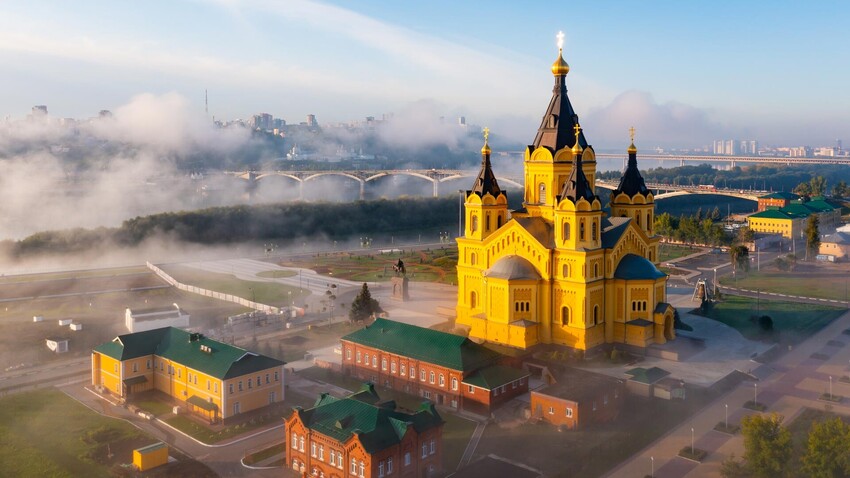
1. Christ the Savior Cathedral, Moscow
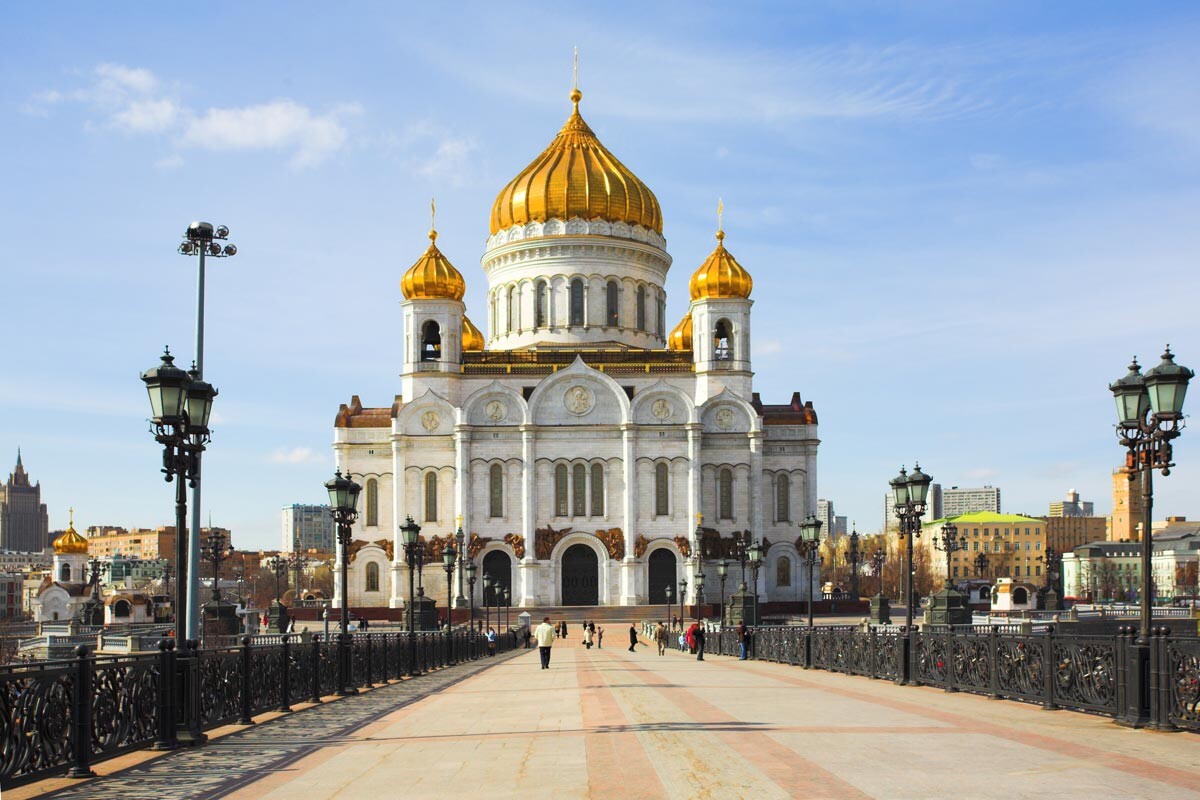
The largest cathedral of the Russian Orthodox Church is located in Moscow and can fit up to 10,000 people. It is the exact replica of a cathedral constructed back in 1882 in honor of the Russian Empire’s victory over Napoleon’s France. The original church was blown up by the Bolsheviks and replaced with a public swimming pool for a long time, before the cathedral was rebuilt after the collapse of the USSR.
2. Main Cathedral of the Russian Armed Forces, Kubinka, Moscow Region

The third tallest Orthodox cathedral in the world at 103 meters is directly tied to World War II history: some of its elements, including the steps, have been forged out of melted down German weapons; inside, some of Hitler’s personal belongings have been preserved, including his military headwear. The black and green cathedral made of metal and bronze opened its doors in 2020, just outside Moscow, quickly becoming the most discussed places of worship in the country.
3. Kazan Cathedral, St. Petersburg

One of the most famous symbols of St. Petersburg is the Romanov Royal Dynasty’s familial church, built in the image of St. Peter’s Basilica in Rome. In Soviet Times, the cathedral ironically housed the Museum of Religion and Atheism, while, today, it is one of the largest functioning cathedrals in the country.
4. St. Isaac’s Cathedral, St. Petersburg
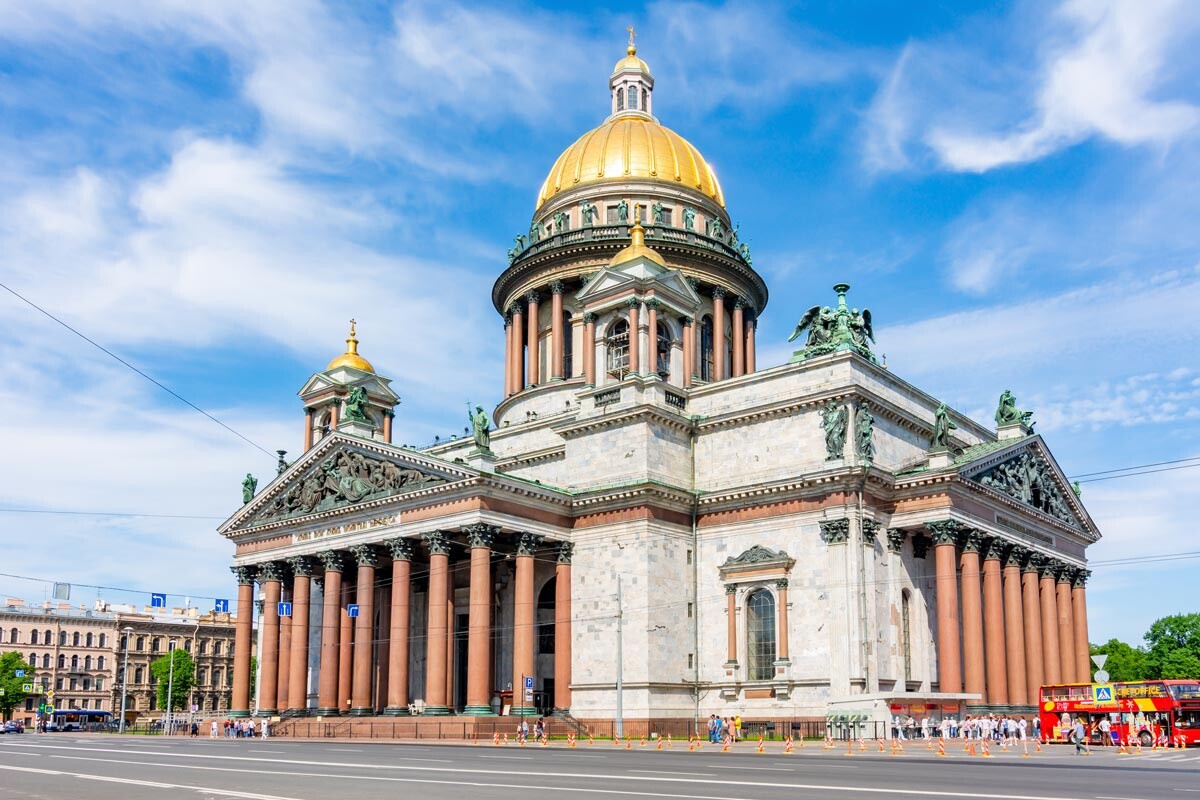
Construction lasted for 40 years, until 1858, with 100 kg of pure gold used for the main dome’s finish. However, the Northern Capital’s inhabitants found the cathedral terribly hefty, believing it overshadowed the buildings around it. It took time for people to get used to its sheer size, although, today, it is impossible to imagine the St. Petersburg cityscape without St. Isaac’s Cathedral.
5. Smolny Cathedral, St. Petersburg
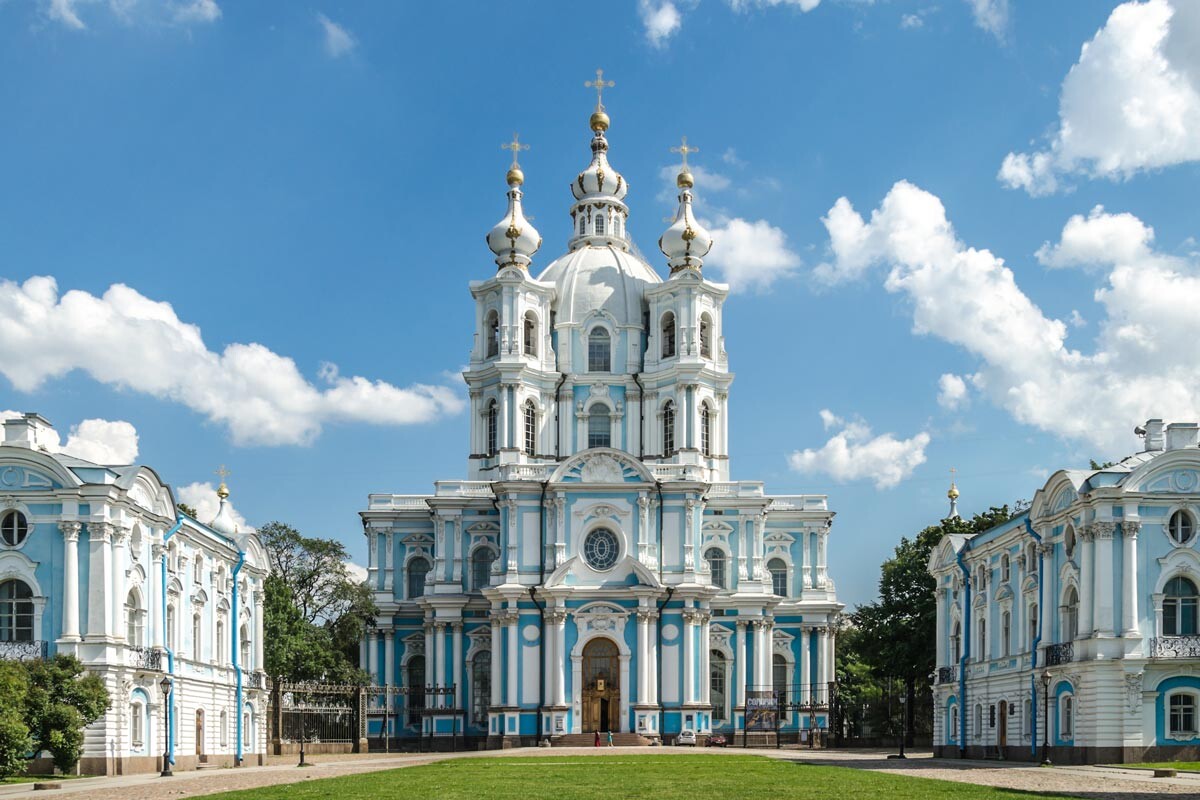
The cathedral broke all construction records, taking 87 years to build, with construction often abandoned due to a lack of funds and a change of architects, among other delays. Initially imagined as a monastery, it instead ended up becoming a privileged educational institution - the Institute for Noble Maidens. Today, it serves as a church and features an interesting optical illusion: the closer you get to it, the smaller it seems!
6. Trinity Cathedral, St. Petersburg

The cathedral was partially constructed with Tsar Nicholas I’s personal funds. The blue domes were adorned with gold stars on his orders. But, in the Soviet Union, the building was closed and was left unharmed only thanks to a fortunate turn of events - it was scheduled for demolition, the plot had been earmarked for a municipal crematorium, but the cathedral was then transferred to the Soviet Ministry of Telecommunications, which simply used it as a warehouse.
7. Transfiguration Cathedral, Khabarovsk
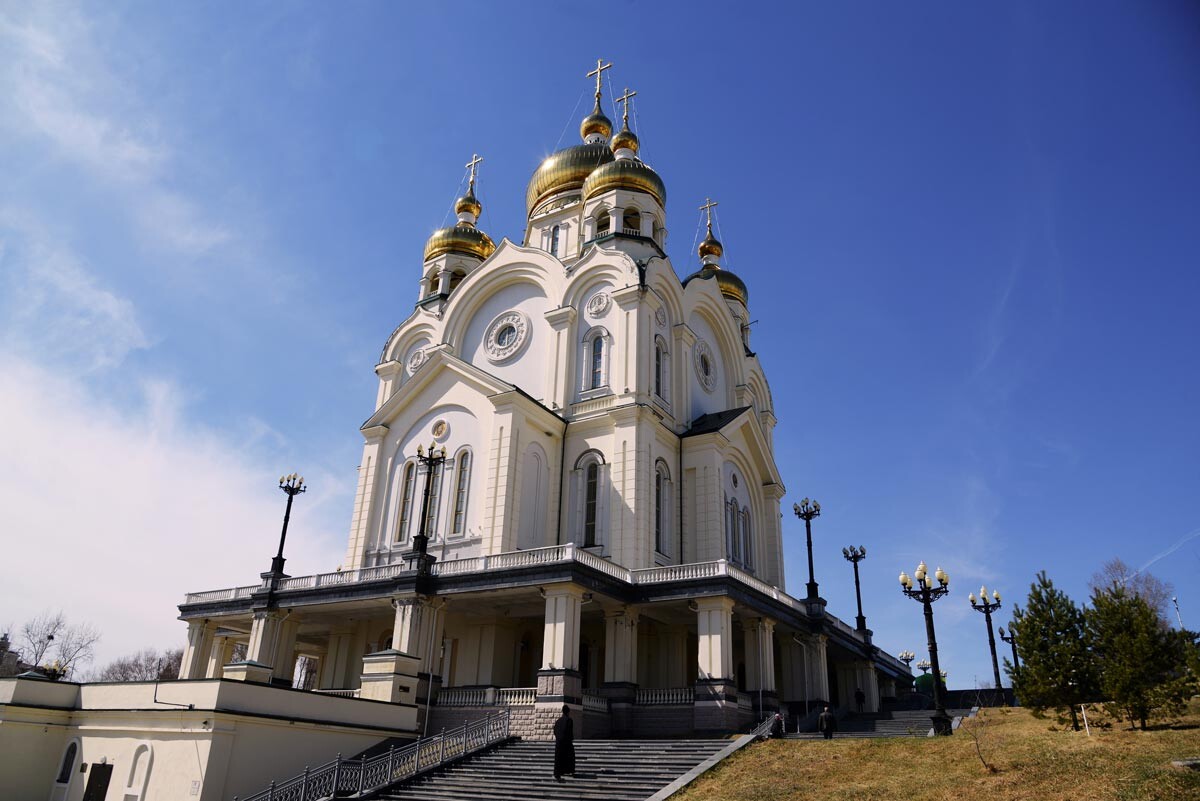
It is referred to as the “Pearl of the Far East”. From the ground to the tip, it stands at 95.5 meters, which is approaching skyscraper levels! The cathedral was constructed in 2004 from donations in Khabarovsk.
8. Cathedral of the Annunciation, Voronezh
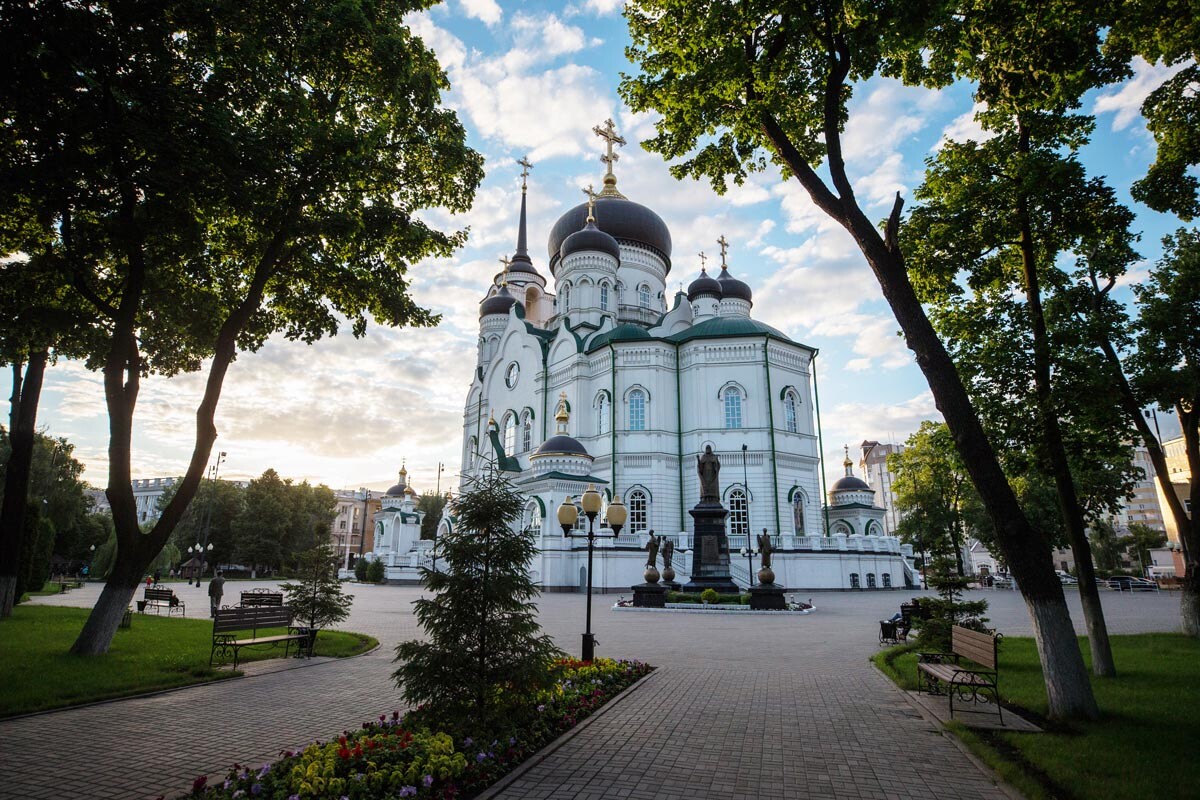
The cathedral’s appearance in Voronezh has been linked to the city’s founding in 1586 - when it was still made of wood. Since then, it was rebuilt numerous times, changed locations and built up again, until the day it became the tallest building in the city. Its crosses can be seen from practically every point in town.
9. Alexander Nevsky (Novoyarmorochny) Cathedral, Nizhny Novgorod
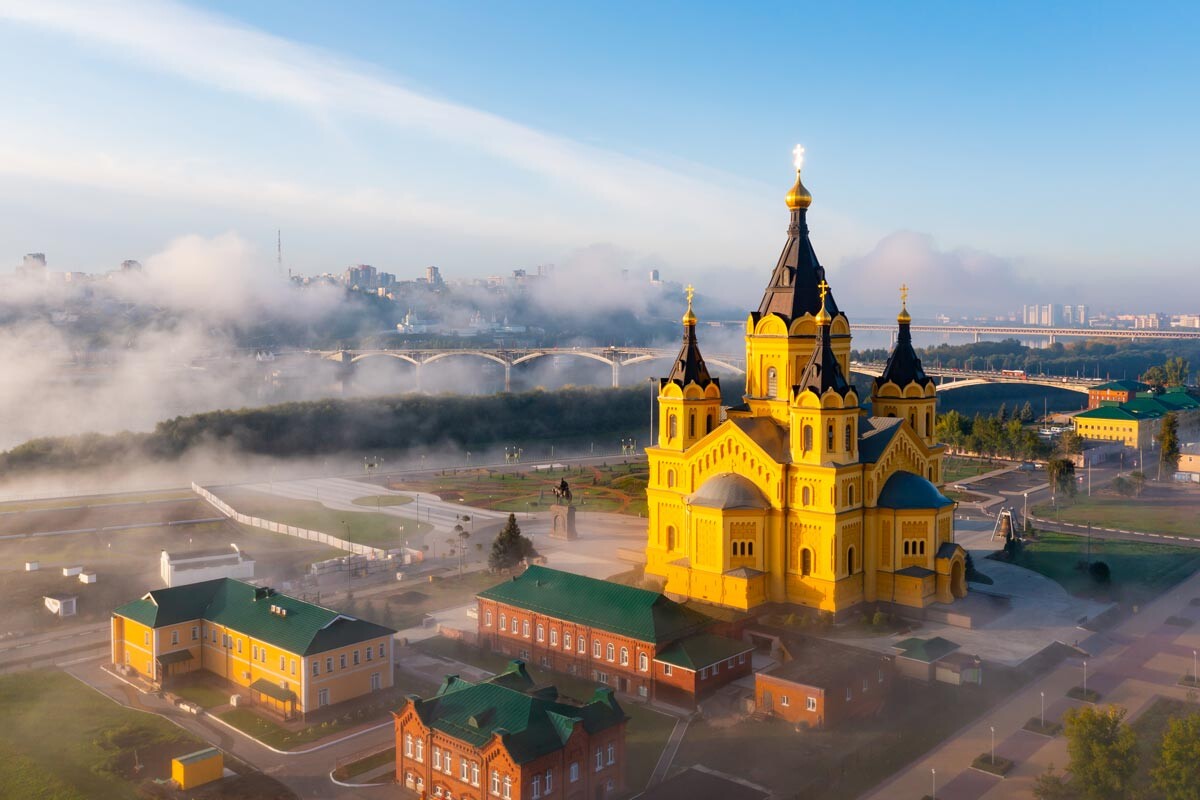
The cathedral at the intersection of the Volga and Oka rivers did not survive the atheistic 1930s, with it ending up being closed and all of its wooden treasures being used for firewood. Its basement was converted into a storage facility. During the war, an anti aircraft battery was mounted on its roof. The building was restored to its former glory in 1992.
10. Savior on Spilled Blood, St. Petersburg
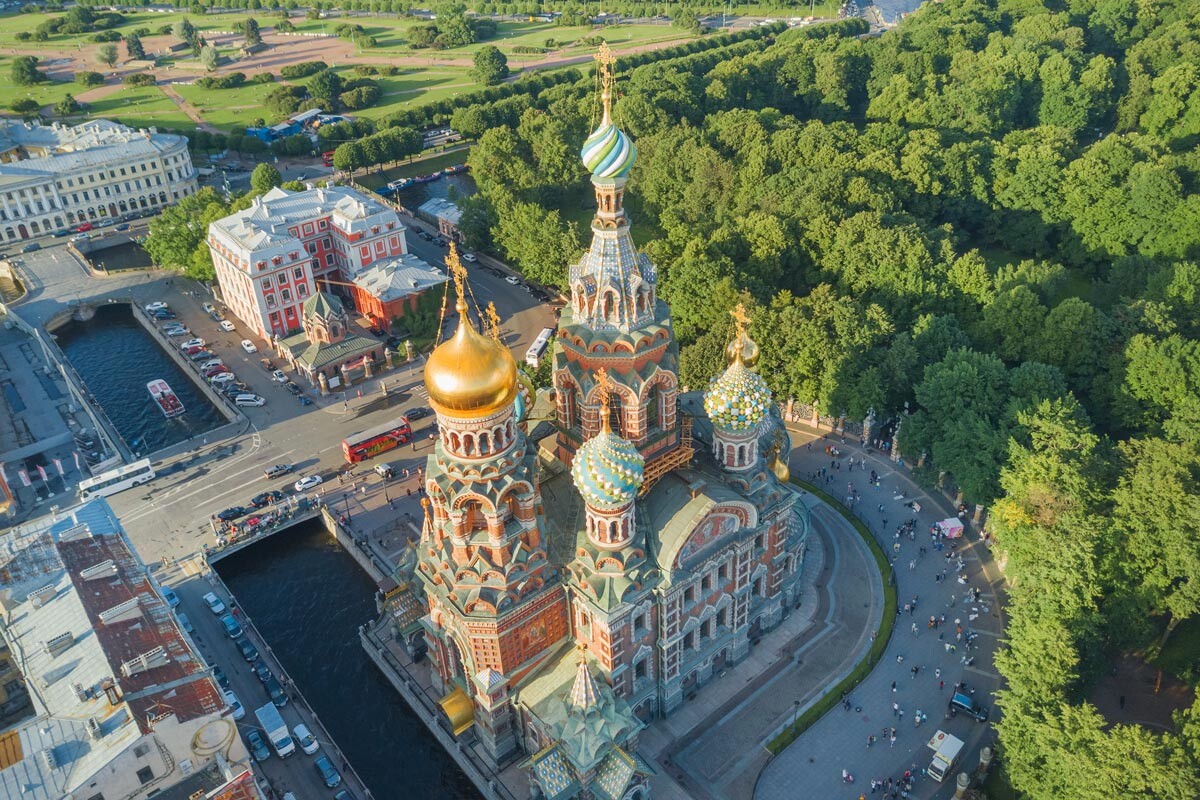
The church was built on the spot where Tsar Alexander II was mortally wounded in 1881. The inside features mosaics that collectively measure seven sq. kilometers!
If using any of Russia Beyond's content, partly or in full, always provide an active hyperlink to the original material.
Subscribe
to our newsletter!
Get the week's best stories straight to your inbox